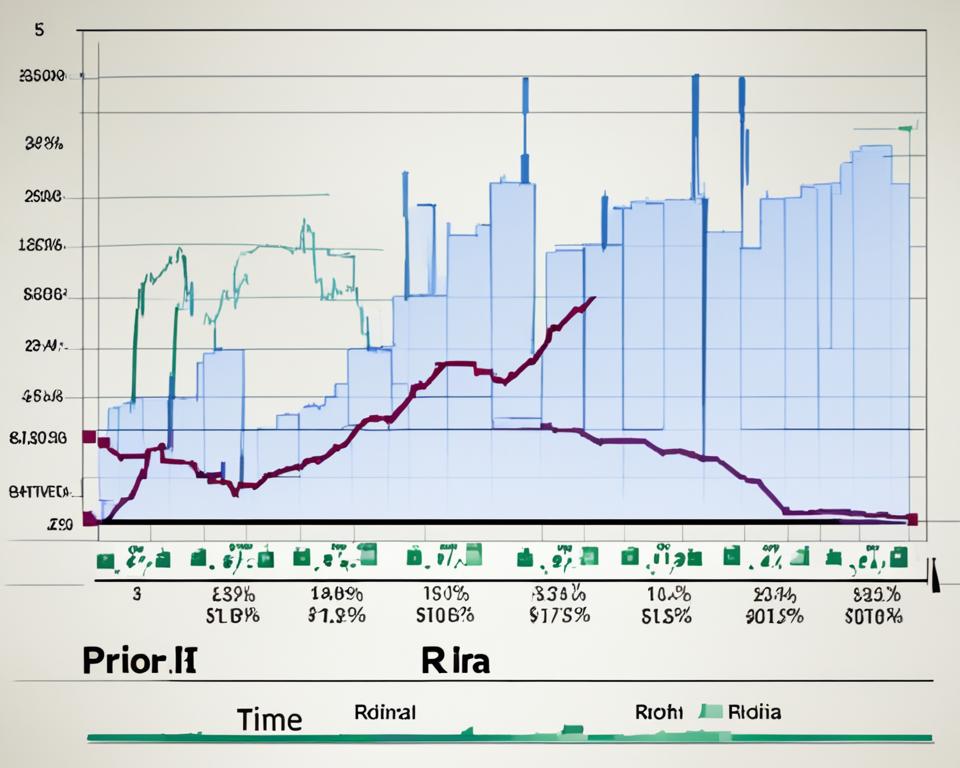When you’re delving into the world of dividend investing, it’s akin to discovering a stream of income that flows directly from the companies you invest in. Think of dividend stocks as your allies in the realm of passive income stocks; these are not just any companies, but those that routinely distribute a portion of their earnings right back to their shareholders. Picture the board of directors sitting around a grand table, deciding to reward you for your investment – that’s dividend stock investing in action.
What solidifies these stocks as bastions of passive income is the magic of the dividend yield, a beacon that guides investors to assess a stock’s income potential relative to its price. Ensuring you’re on the company’s shareholder roster before the ex-dividend date is crucial – it’s your golden ticket to the dividends gala.
Spanning across diverse sectors from utilities to basic materials, these dividend distributing champions often hail from the ranks of the profit-predictable, standing out as fortresses of financial consistency. Whether you crave the quarterly thrill of cash increases in your investment account or prefer the reinvestment route for compounding your portfolio’s growth, dividend stock investing caters to your every financial aspiration.
Key Takeaways
- Dividend stocks act as a channel for passive income by paying out portions of company profits to shareholders.
- The dividend yield is an essential marker, setting the stage for comparison and informing investment decisions.
- To draw from the dividend pool, you must purchase shares before the ex-dividend date.
- Sectors like basic materials and utilities are renowned territories for finding dividend-paying stocks.
- Choosing to retain earnings or distribute them as dividends is a pivotal decision that reflects a company’s growth trajectory and financial health.
- Dividend investing intersects with a strategic outlook, favoring regular and predictable returns.
- Investing in dividend stocks is not just about earnings but exploring the intrinsic value and stability of a company.
The Basics of Dividend Stocks
Embarking upon the journey of dividend investing means understanding the foundational elements that make a stock a ‘dividend stock.’ Governed by the watchful eyes of a company’s board of directors, these are the select equities that promise not only potential value appreciation but also periodic payouts that bolster your income streams.
Definition and Function of Dividends
At their core, dividends represent the share of a company’s earnings distributed to shareholders, embodying a tangible reward for your investment in a company’s equity. Predominantly, these distributions derive from the net profits a company accrues, functioning as a type of yield most shareholders eagerly anticipate. As you seek the best dividend stocks, understanding this reward system is crucial to harnessing its full potential.
Types of Dividends: Cash and Stock
Cash dividends remain the most prevalent form, a straightforward boon to your bank account. Yet, there’s a world beyond cash payouts; companies may also dispense dividends in the form of additional shares. This stock dividend option can amplify your stake in the company sans additional investment on your part. Furthermore, through Dividend Reinvestment Programs (DRIPs), dividends received can automatically funnel into purchasing more stock, fostering the growth of your holdings in a compounding cycle.
Key Role of Dividend Yield
The dividend yield stands as the sentinel that investors use to compare dividend-paying stocks. This pivotal metric is calculated by dividing the annual dividends per share by the stock’s price, offering a percentage that represents the income your investment generates relative to its market value. Such a tool becomes indispensable as you sift through the plethora of options to land the high dividend stocks with yields that make your investment worthwhile.
As you navigate the terrain of dividend investing, equipping yourself with the basics lends you a keen edge in identifying securities that not only promise wealth growth but also guarantee a periodic dispensation of earnings, making them attractive additions to your investment portfolio.
What Are Dividend Stocks
Imagine a river of income where the water symbolizes the profits flowing from corporations to your portfolio. In the realm of investments, dividend stocks stand out as vessels that navigate this river, steering a steady course of earnings into the accounts of shareholders like you. These aren’t ordinary stocks; they are beacons of passive income stocks, shining a light on the health and stability of a company, while also contributing to dividend stock investing as a powerful strategy for both income and potential growth.
When you invest in dividend growth stocks, you’re placing your trust in companies that consistently share a part of their profit with you. These payouts can come in many forms, including:
- Cash dividends – a direct infusion into your investment account
- Stock dividends – additional shares that increment your stake in the company
- Reinvestment programs – where your dividends are used to purchase more stock, expanding your investment over time
Within the tapestry of the financial markets, dividend stock investing threads together the chase for capital gains with the allure of predictable income. These stocks serve a dual purpose, reflecting a company’s enduring success on one hand and providing you with a dependable flow of income on the other.
So why are these types of stocks so desirable? One reason is their potential to generate a regular, predictable flow of income. This quality makes them particularly attractive to investors seeking stability in their portfolio. Let’s take a closer look at what makes dividend-paying companies tick:
| Company Feature | Impact on Dividends |
|---|---|
| Stable and Predictable Profits | A foundation for regular and reliable dividend payments. |
| Financial Health | Indicates the company’s ability to sustain and increase dividends. |
| Strategic Growth Plans | May influence the decision to reinvest earnings rather than pay out dividends. |
| Investor Incentives | Dividends act as a reward system, encouraging long-term shareholder loyalty. |
As you weave your way through the vast array of investment opportunities, it becomes clear why dividend growth stocks claim a significant spot in many astute investors’ portfolios. By offering a symbiotic relationship between the investor and the company, these stocks amplify the potential for wealth without compromising on financial security or growth.
The Financial Mechanics Behind Dividend Issuance
As you delve deeper into the art of dividend investing, it’s essential to grasp the financial cogs that drive the process of dividend distribution. Let’s unravel the workings behind the fiscal curtain, where a blend of corporate decision-making and profitability influences the rewards you receive as an investor in dividend-paying stocks.
Corporate Profits and Shareholder Distribution
Corporate profits are the pulse point of dividend issuance. These earnings, after accommodating the company’s operational costs and future investments, form the pool from which dividends are sourced. The residual is what eventually flows to you, the shareholder, symbolizing your portion of the company’s success. Calculating the dividend yield, a company’s annual dividend relative to its share price, is a critical step offering insights into the investment’s attractiveness and potential return on your funds.
Role of a Company’s Board in Dividend Decisions
The company board’s role is pivotal, as these trusted stewards hold the power to announce, alter, or cease dividend issuance. Their choices are shaped by the company’s present financial health and strategic trajectory. It’s a nuance of dividend investing that emphasizes the company’s commitment to its investors through consistent and beneficial shareholder policies, fostering a trust that echoes the strength of your investment.
Difference Between Regular and Special Dividends
As an investor, it’s critical to differentiate between regular and special dividends. Regular dividends are announced and paid out based on a schedule—specific intervals chosen by the company, like quarterly or annually—ushering in a rhythm of expectations for your earnings. On the flip side, special dividends are one-off pleasantries, resulting from unanticipated profit surges, often seen as cherry on top, rewarding shareholders with an unexpected boost in returns.
| Type of Dividend | Description | Investor Advantage |
|---|---|---|
| Regular Dividend | Predictable payments at set intervals providing steady income. | Reliability and planning for income streams. |
| Special Dividend | Unscheduled bonus reflecting excellent profit scenarios. | Potential windfall enhancing total return. |
Significance of Dividend Dates for Investors
For astute investors eyeing dividend growth stocks, high dividend stocks, and the best dividend stocks, understanding the timeline of dividend distribution is as critical as selecting the stocks themselves. These key dates map out the journey of dividends from company coffers to your investment account. Skipping this education means possibly missing out on collecting the spoils that come with these lucrative investments.
Grasping the significance of each dividend date ensures you’re not left on the sidelines when payouts are distributed. Aligning your buy and sell decisions with these dates can inform a strategic approach to maximizing your returns and effectively managing your investment portfolio. Let’s dissect the important dividend dates you need to circle on your financial calendar:
| Dividend Date | Description | Significance for Shareholders |
|---|---|---|
| Announcement Date | The day a company declares it will pay a dividend. | Initial indicator of company’s profit-sharing, influencing investor sentiment. |
| Ex-Dividend Date | The cutoff to be eligible for the upcoming dividend payment. | Essential for investors to purchase shares before this date to receive dividends. |
| Record Date | The company’s deadline to determine eligible shareholders for the dividend. | Confirmation of investors who will receive the dividend based on their ownership. |
| Payment Date | The actual day that the dividend gets paid to shareholders. | The culmination where investments yield tangible returns. |
Timing is everything when it comes to dividends. Missing the ex-dividend date by even a day can mean not receiving the dividend payout for that period. Conversely, being well-informed can position you to reap the rewards of dividend payments from high dividend stocks, bolstering your investment income.
Remember, the ex-dividend date is particularly pivotal since it is the crucial point where ownership determines eligibility. Invest before this date, and you’re a step closer to enjoying the benefits of dividend growth stocks. Buy after, and you’ll need to wait for the next cycle. Always align your purchasing strategy with this timeline to optimize your chances for higher earnings.
Marking these dates on your calendar, keeping track of announcements, and planning your buys and sells around them are proactive steps towards becoming a savvy investor in the realm of best dividend stocks. With a comprehensive grasp of these critical dates, you’re well-equipped to strategically navigate the dividend disbursement landscape, ensuring you’re always in the right place at the right time to capitalize on your investments.
Impact of Dividends on Stock Price
Among the considerations for investors in dividend stock investing, the way that dividends affect stock price stands paramount. If you’re assessing passive income stocks, here’s what you need to understand about the potential financial impacts following a dividend announcement:
Dividend Announcements and Market Reaction
When a company announces a dividend, the action often serves as a signal of confidence in its financial stability, which may attract more investors, potentially driving up the stock price. For you as an investor, this can be an opportune moment to gauge market sentiment and evaluate whether to adjust your portfolio in light of the upcoming dividend.
Understanding Price Adjustments on Ex-Dividend Dates
With dividend yield as a key metric, attention must be paid to the ex-dividend date. This date often results in price adjustments equivalent to the value of the dividend paid. This adjustment may not reflect negatively on the company’s worth but is an essential factor in the short-term price movement of the stock. As an investor, understanding this dynamic prepares you to anticipate the temporary dip in the stock’s trading price on the ex-dividend date, crucial for timing your investment decisions.
To further illustrate the stock price dynamics around dividend distributions, consider the following scenario:
| Event | Price Impact | Investor Action |
|---|---|---|
| Dividend Announcement | Possible price increase due to positive perception. | Investors may buy on anticipation of dividend receipt. |
| Ex-Dividend Date Arrives | Automatic price drop equivalent to dividend amount. | Investors may sell after securing dividend entitlement. |
| Post Ex-Dividend Market Activity | Varies based on investor behavior and broader market sentiment. | Investors assess whether to hold or sell based on long-term strategy. |
As you consider adding dividend yield to your passive income streams, keep a keen eye on these price adjustments. They’re a fundamental part of dividend stock investing strategy and can influence when to buy or sell for maximum return. Always remember, while dividends may indicate a company’s robust health, the market’s reaction to dividend-related events is a dance of perception and valuation that can present both opportunities and risks.
Why Companies Choose to Pay Dividends
Exploring the realm of dividend investing offers insights into why certain companies are considered the best dividend stocks. These entities choose to distribute profits to shareholders in the form of dividends for a myriad of strategic reasons. Beyond generously sharing profits, dividends can serve as a beacon of the company’s financial confidence and resilience.
Investors’ Perception of Dividend Announcements
When a company announces a dividend, it sends a message to the market: It’s a symbol of strength and stability. For investors, these announcements are not just cheer-worthy news, they enhance the appeal of dividend-paying stocks. Regular and increasing dividends fortify the perception that a company is performing well, fostering a sense of investor loyalty that can be pivotal in retaining a robust shareholder base.
Dividend Payments as a Reflection of Company Health
Consistent and growing payments reflect positively on a company’s fiscal health and suggest competent management. Conversely, the reduction or absence of dividend payments may raise red flags about potential financial issues. However, it’s important to see the flip side too; sometimes, such decisions tie into deliberate strategies aimed at reallocating funds for promising growth ventures, potentially leading to greater returns for shareholders in the long run. Dividend investing, therefore, involves peering beyond the surface to understand a company’s broader financial narrative.
| Dividend Decision | Possible Investor Interpretation | Potential Strategic Reasoning |
|---|---|---|
| Consistent Dividend Increase | Company is stable and profitable | Reflects solid earnings and a commitment to shareholder returns |
| Dividend Cut | Company may be facing financial challenges | Redirecting funds to support growth strategies or manage debts |
| Special One-Time Dividend | Company has excess capital | Distribution of surplus profits not needed for immediate reinvestment |
Investing in Dividend Stocks: Strategies and Considerations
When you embark on the path of dividend investing, you’re exploring a world where high dividend stocks can become cornerstones of your portfolio, offering regular income and potential for growth. Yet, diving into dividend growth stocks is more complex than just picking stocks with the highest yield. Let’s delve into the strategies and factors that warrant your consideration.
In the universe of passive income stocks, the focus isn’t solely on the present high yield. You should assess the robustness of dividends in alignment with the company’s long-term prosperity. What glitters today may not hold the same sparkle tomorrow if a company’s dividend payout is not sustainable. Hence, seek out those dividend-paying stocks where consistency in growth matches the yield allure.
| Dividend Factor | Consideration | Investor Benefit |
|---|---|---|
| Dividend Yield | Assess whether the current yield is sustainable based on earnings and industry outlook. | Yields insight into the relative value of your investment. |
| Dividend Growth | Examine historical trends to gauge potential for future increases. | Indicates a company’s increasing profitability and potential for higher future income. |
| Company Stability | Stable companies are more likely to maintain and grow dividends. | Reduces risk associated with dividend cuts or eliminations. |
| Tax Implications | Understanding tax treatment can affect the net benefit of your investment. | Maximizes post-tax return, providing a clearer picture of investment efficiency. |
One strategy to evaluate these stocks is the dividend discount model, which helps you estimate the present value of future dividend payouts, ensuring you make an educated guess on whether the stock is a sound long-term investment. Another key aspect involves tax considerations; certain dividends may receive favorable tax treatment, increasing their attractiveness based on your individual tax circumstances.
While the lure of high yields is powerful, it’s crucial that you don’t let it obfuscate the need for thorough due diligence. Always balance the allure of immediate returns with the company’s financial health and future prospects. Doing so steers you towards a portfolio that not only aims for growth but is also structured for resiliency against market volatility.
Dividend Aristocrats: What Sets Them Apart?
Within the arena of dividend stock investing, certain elite companies stand out, rightfully earning the title of “Dividend Aristocrats.” This coveted status is not bestowed lightly, as it represents a commitment to shareholder value that only the best dividend stocks can maintain. What exactly elevates these companies into such a venerable position, and how does their continued performance reinforce their stature in the eyes of investors?
Criteria for Dividend Aristocrat Status
The hallmark of a Dividend Aristocrat lies in its proven ability to not merely pay dividends but to consistently increase them. These companies have declared and elevated their dividend payouts for a minimum stretch of 25 consecutive years, showcasing a remarkable blend of endurance and fiscal acumen. Their inclusion in the S&P 500 index underscores their recognition as sizable, established entities with dependable financial profiles. The following table succinctly captures the essence of what it takes to bear the Dividend Aristocrat title:
| Criterion | Description |
|---|---|
| Dividend Increase Record | A minimum of 25 consecutive years of dividend growth. |
| S&P 500 Membership | Part of the S&P 500 index, reflecting significant market presence. |
| Market Capitalization | Typically boast large market capitalization, ensuring stability. |
| Fiscal Reliability | A solid track record of financial performance and resilience. |
Long-Term Performance and Reliability
Aristocrats of the dividend domain offer not just a momentary snapshot of success, but a saga of durability. While some seekers of dividend yield might be tempted by higher immediate returns, Dividend Aristocrats warrant attention due to their long-term reliability. Their enduring policy of increasing dividends is often interpreted by investors as a signal of ongoing robustness and an ability to weather economic cycles with agility.
However, it’s not just consistency that marks these entities; it’s their underpinning financial health and strategic foresight in capital allocation. This paradigm of steadfast performance has rendered Dividend Aristocrats a staple in portfolios centred around dividend investing. They might offer modest yields compared to their flashier counterparts, but their stalwart nature provides a bedrock of stability that many investors find unparalleled.
- Dividend growth, despite market fluctuations, underlines investor confidence.
- Portfolios boasting Dividend Aristocrats often exhibit less volatility over time.
- Their strategic approach to dividend distribution reflects sound financial governance.
- Though yields may be lower, the compounding effect over time aids substantial portfolio growth.
Summing up, Dividend Aristocrats distinguish themselves through a symbiotic relationship of longevity and progressive returns, thereby setting a gold standard for what constitutes the best dividend stocks. As you carve your path in dividend stock investing, recognizing and understanding the intrinsic value of Dividend Aristocrats could be your north star in crafting a resilient, income-generating portfolio.
Dividend Stocks vs. Growth Stocks: Understanding the Trade-offs
When approaching the investment landscape, you’re faced with a range of choices that balance risk, reward, and time horizon. Two central themes in this domain are dividend investing and the pursuit of growth stocks. Each path comes with its unique set of trade-offs that can significantly influence the makeup of your portfolio and, ultimately, your financial success.
Income Generation vs. Capital Appreciation
Choosing between dividend-paying stocks and growth stocks tends to revolve around the pivot of desired income generation versus potential for capital appreciation. Dividend stocks, characterized by their predictable and steady nature, offer investors a glimpse of regular returns. These assets typically attract you if you are inclined towards generating consistent income and preferring the cushion of lower volatility. Contrastingly, growth stocks are the darlings of capital appreciation, seeking to reinvest earnings to fuel price acceleration and potentially higher returns.
Certainly, the relationship between dividends and stock price is not one of direct causation, but the allure of a tangible return in the form of dividends is hard to ignore. As an investor, balancing between the instant gratification of dividends and the long game played with growth stocks forms the crux of your portfolio construction.
Investor Profiles for Dividend vs. Growth Stocks
Suitability and alignment with investor profiles is another dimension worth considering. If your risk tolerance is lower and you seek a passive income stream, you might find solace in the arms of high dividend stocks. Your propensity for risk, stage in life, and investment duration all play into whether dividend or growth stocks better serve your aspirations.
Whether you’re angling for the steady drumbeat of dividends to shore up your retirement plans or banking on the potential windfall from the appreciation of growth stocks to accelerate your long-term financial goals, the choice you make must echo your individual profile and investment philosophy.
| Investment Type | Income Generation | Capital Appreciation | Volatility | Suitable for Investor Profile |
|---|---|---|---|---|
| Dividend Stocks | High | Lower | Low to Moderate | Income-focused, risk-averse |
| Growth Stocks | Low | High | High | Growth-oriented, risk-tolerant |
Tax Implications of Dividend Investing
When you venture into the world of dividend investing, it’s not just about the allure of gaining passive income through dividend yields, it’s also about how these returns interact with the taxman. As a smart investor in the pursuit of the best dividend stocks, understanding the tax aspects is as vital as selecting stocks with high yields. The rate at which your dividends are taxed can greatly impact the net amount you pocket, turning tax strategy into an essential component of your overall investment plan.
Let’s put this into perspective: You’ve picked some of the best dividend stocks, leaning towards those praised for generous dividend stock investing returns. But here comes the distinction—depending on the type of dividend, the IRS may tax them differently. It’s imperative for you to discern between qualified and nonqualified dividends since each carries distinct tax implications.
Qualified dividends, favored for their lower tax rates, are akin to a financial serenade to your dollars, allowing more of your investment returns to flourish. To qualify, you must hold the stock for a specific period—generally, this means owning the stock for over 60 days during the 121-day period that begins 60 days before the ex-dividend date. When these conditions are met, your dividends enjoy the more favorable long-term capital gains tax rates, which could be 0%, 15%, or 20%, depending on your taxable income.
Conversely, nonqualified dividends don’t get this preferential treatment and are taxed at your ordinary income tax rates. If your tax bracket is on the higher side, these rates could climb up to 37%, which certainly can eat significantly into your dividend earnings. This tax factor could sway your decision on how much to lean into dividend stock investing, especially for stocks with high yields that may potentially fall into the nonqualified category.
| Dividend Type | Tax Treatment |
|---|---|
| Qualified Dividends | Taxed at long-term capital gains rates (0%, 15%, or 20%) |
| Nonqualified Dividends | Taxed at ordinary income tax rates (up to 37%) |
So, as you peruse the market for dividend yield opportunities, remember that taxes can transform what appears to be a lucrative dividend yield into something less shiny. Factor in these tax stipulations, and consider the overall yield after taxes—it’s this after-tax yield that truly matters to your investment return.
Always consider consulting with a tax professional to help you navigate the complexities of dividend taxes. This ensures that your journey in dividend stock investing doesn’t lead to unexpected encounters with tax-related hurdles, thus positioning you to optimize your investment portfolio for both pre-tax income and post-tax profit.
Building a Portfolio with High Dividend Stocks
As you consider fortifying your investment portfolio, focusing on high dividend stocks can be a wise strategy. These stocks are often seen as beacons within the investment landscape, providing both regular income and potential for appreciation. The journey to building a dividend-centric portfolio begins with recognizing and understanding the linchpin of dividend yield—its allure, its sustainability, and its capacity to amplify your financial resilience.
Identifying High Dividend Yields
To pinpoint those elusive dividend growth stocks, savvy investors look beyond the surface yield. The true value of these passive income stocks lies in their ability to continue delivering dividends over the long term. A critical eye and strategic analysis can distinguish between high yields that are a sign of stability and those that could be unsustainable and risky.
When identifying high dividend yields, it is essential to understand the company’s dividend history, its payout ratio, and the industry’s health. This triad of analysis ensures that you capture more than just a high yield, but a yield backed by steadfast company performance and industry stability.
Diversification and Risk Management in Dividend Portfolios
Diversification doesn’t just embellish an investment dictionary; it’s a cornerstone of a strong portfolio. In managing risk, one cannot overlook the power of diversification, especially when it comes to investing in dividend growth stocks or high dividend stocks. Blending various sectors and considering both established blue-chip stocks and emerging players creates a balance that can weather market storms and still provide that coveted regular income.
Proper risk management in your dividend portfolio also entails regular re-evaluation, ensuring that any single stock or sector does not disproportionately anchor your investment’s fate. By spreading your interests across various dividend payers, you mitigate risk and set the stage for a more stable, predictable revenue flow to your accounts.
| Stock Sector | Yield Percentage | Payout Ratio | Dividend Growth Rate |
|---|---|---|---|
| Utilities | 3.5% | 60% | 4.5% annually |
| Healthcare | 2.0% | 45% | 6.8% annually |
| Consumer Goods | 2.8% | 55% | 3.2% annually |
| Energy | 4.3% | 80% | 2.1% annually |
As you tread through the territory of dividend investing, trust in the stability and strength of a diversely rich portfolio to secure your financial future. High-yield stocks can be tantalizing, but only when paired with financial prudence do they unlock the doors to enduring wealth and steadfast passive income.
Conclusion
In the journey of dividend investing, you’ve traversed the landscape of high dividend stocks and learned how they can illuminate the path to financial security and growth. These robust pillars of investment portfolios are not mere placeholders; they’re dynamic vehicles offering the allure of steady income coupled with the potential for capital appreciation. You’ve uncovered the workings behind dividend yields, the impact of market perceptions, and the crucial dividend dates that shape your investment strategy.
Whether you’re seeking the consistency and reliability that best dividend stocks offer or weighing the tax implications that sway your net returns, your investment acumen grows with every detail you absorb. Remember, it’s the informed decisions, aligned with your fiscal aims and risk appetite, that build your financial fortress. Diversification and careful selection of dividend payers form the keystones of this endeavor.
As with any investment journey, the road is paved with both opportunities and obstacles. Conducting thorough research and engaging in discussions with financial advisors can sharpen your investment strategies, keeping you ahead in the game of dividends. Your pursuit of high dividend stocks is more than a quest for income; it’s a testament to your commitment to cultivating a portfolio that stands steadfast against the tides of market volatility, securing not just returns, but peace of mind.
FAQ
What exactly are dividend stocks?
Dividend stocks are shares in companies that regularly distribute a portion of their earnings to shareholders in the form of dividends. Investors in these stocks can earn passive income from these payments, which typically come from the company’s profits.
How do dividends function?
Dividends are distributions made by a company to its shareholders, typically from its profits. They can be issued in cash or as additional shares of stock. Companies usually pay dividends on a regular basis, such as quarterly or annually, and shareholders must own the stock before the ex-dividend date to receive the payout.
What types of dividends can investors receive?
Investors can receive dividends in the form of cash or additional stock. Some companies also offer Dividend Reinvestment Programs (DRIPs), where the cash dividend is reinvested to purchase more shares of the company’s stock, potentially compounding the investor’s returns.
Why is dividend yield important?
Dividend yield is a financial ratio that shows how much a company pays out in dividends each year relative to its stock price. It is an important measure for investors to assess the attractiveness of a dividend-paying stock, helping them understand the income they might receive in relation to their investment.
Can you explain the role of a company’s board in dividend decisions?
A company’s board of directors is responsible for making decisions about when and how much dividend to pay. They consider the company’s financial health, earnings, and future growth prospects before declaring dividends. The board’s focus on both the company’s stability and shareholder returns has a direct impact on dividend policies.
What’s the difference between regular and special dividends?
Regular dividends are recurring payments made by a company to its shareholders, often on a quarterly basis. In contrast, special dividends are one-time payments that may occur when a company has excess profits, and they are not part of the regular dividend payment schedule.
How do dividend announcements affect a company’s stock price?
Dividend announcements can positively affect a company’s stock price as they may signal financial health and profitability. Conversely, the stock price might drop slightly on the ex-dividend date to reflect the dividend payment’s value being removed from the company’s assets.
Why do companies choose to pay out dividends to shareholders?
Companies pay out dividends to return a portion of their profits to shareholders and to signal confidence in their financial stability. Consistent dividend payments can also encourage investor loyalty and attract new investors looking for regular income streams.
What is a Dividend Aristocrat and why are they notable?
A Dividend Aristocrat is a company included in the S&P 500 index that has not only paid but also increased its base dividend annually for at least 25 consecutive years. They are considered benchmarks of reliability and have a track record of enduring through various economic conditions.
What should investors consider when choosing between dividend stocks and growth stocks?
Investors should consider their financial goals, risk tolerance, and investment horizon. Dividend stocks may offer steady income and typically lower risk, while growth stocks have the potential for higher returns through capital appreciation but may entail greater volatility and no income from dividends.
How are dividends taxed?
Dividends are taxed as either qualified or nonqualified. Qualified dividends are taxed at the lower long-term capital gains tax rate, whereas nonqualified dividends are taxed at the higher ordinary income tax rate. The classification depends on various factors, including the holding period of the stock.
How can an investor identify high dividend yields sustainably?
Investors should look for companies with a history of consistent dividend payments and the financial stability to maintain those payments. It’s essential to analyze the company’s earnings, payout ratios, and future growth prospects to ensure that high dividend yields are sustainable over the long term.
Why is diversification important in creating a dividend stock portfolio?
Diversification helps manage risk by spreading investments across a variety of dividend-paying stocks from different sectors. This strategy can protect against the risk of overexposure to any single stock or economic sector, ensuring more stable returns and a more resilient income stream across market conditions.












